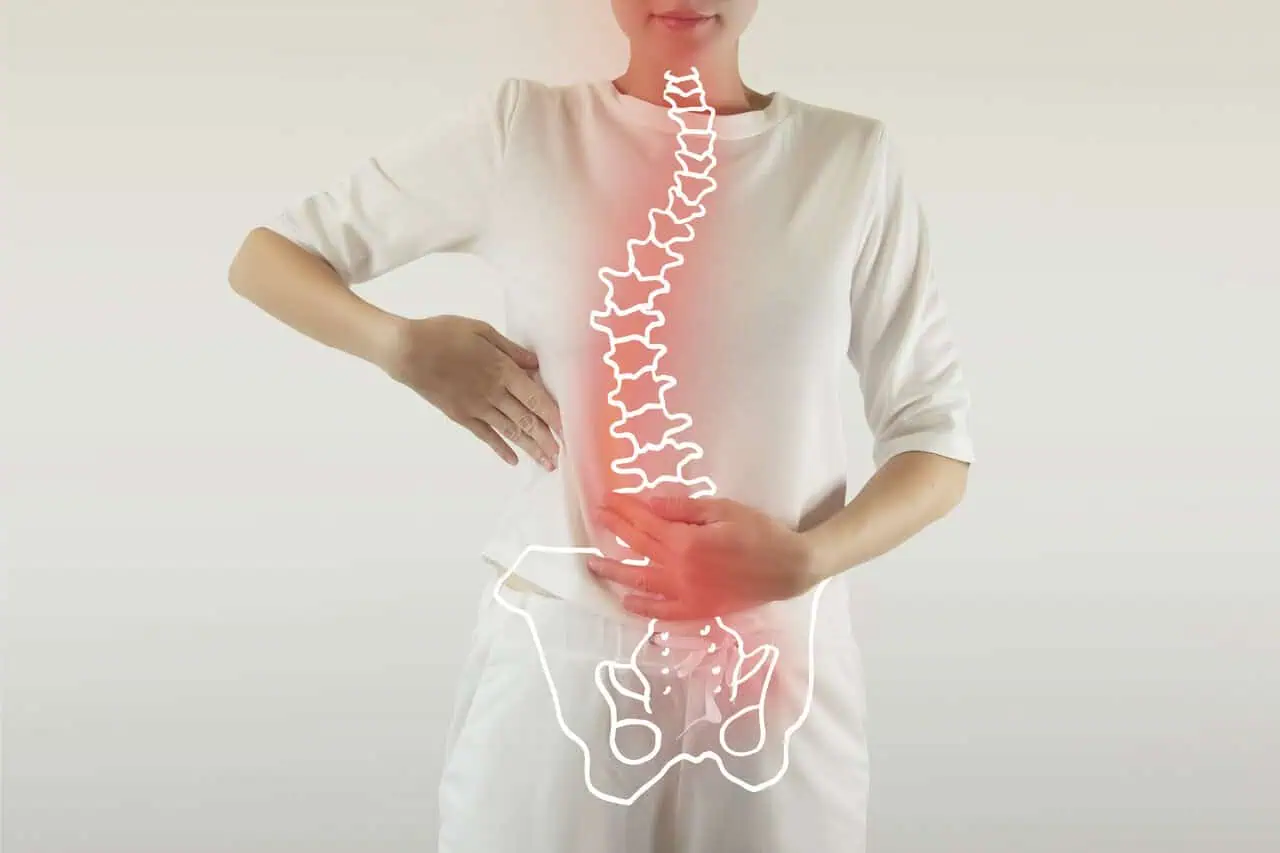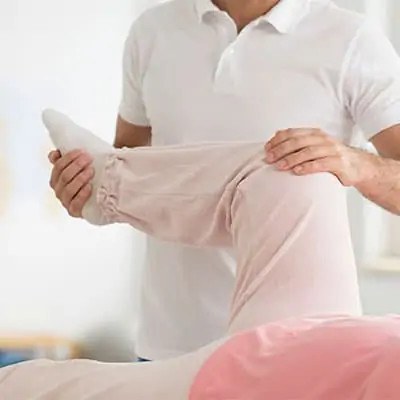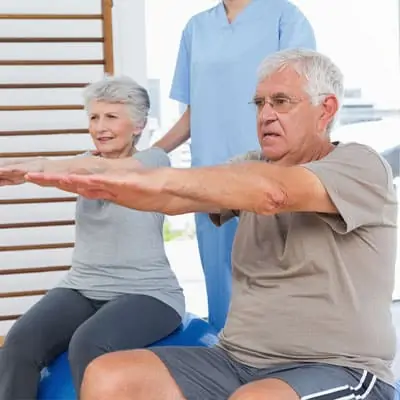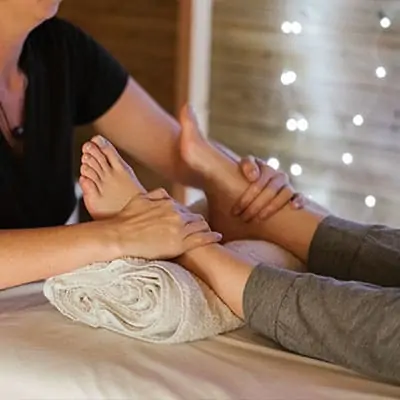Understanding Spinal Cord Injury Rehabilitation
Importance of Rehabilitation
Spinal cord injury rehabilitation is crucial for individuals who have experienced spinal cord damage. It plays a vital role in helping us regain independence, improve functionality, and enhance the overall quality of life.
Rehabilitation after a spinal cord injury aims to facilitate physical and psychological recovery. It helps mitigate the potential long-term complications and enables us to adapt to new ways of performing everyday activities. An effective rehab program not only focuses on physical well-being but also considers mental and emotional health, providing comprehensive care.
Goals of Spinal Cord Injury Rehabilitation
The objectives of spinal cord injury rehabilitation are multifaceted. They are designed to address the unique needs of each individual, promoting maximum recovery and adaptation. Here are the primary goals:
- Regaining Mobility: Improving our ability to move, whether through walking or using assistive devices, is a primary focus.
- Enhancing Strength and Coordination: Strengthening muscles and improving coordination can help us perform daily tasks more easily.
- Managing Pain and Spasticity: Implementing strategies to reduce chronic pain and manage muscle spasticity is essential for our comfort and function. For more details on this, refer to our section on spasticity management.
- Improving Independence in Activities of Daily Living (ADLs): Encouraging self-sufficiency in activities such as dressing, bathing, and eating.
- Fostering Psychological Health: Providing mental health support to help us cope with the emotional impact of spinal cord injury. This includes strategies for maintaining mental well-being.
- Preventing Secondary Complications: Taking steps to prevent complications such as pressure sores, respiratory issues, and urinary tract infections.
Table: Key Goals and Expected Outcomes
| Goal | Expected Outcome |
|---|---|
| Regaining Mobility | Improved walking ability or effective use of mobility aids |
| Enhancing Strength & Coordination | Increased muscle strength and better coordination in movements |
| Managing Pain & Spasticity | Reduction in chronic pain and muscle stiffness |
| Improving Independence in ADLs | Ability to perform daily activities with minimal or no assistance |
| Fostering Psychological Health | Enhanced emotional well-being and coping mechanisms |
| Preventing Secondary Complications | Reduced risk of pressure sores, respiratory issues, and UTIs |
Engaging in a structured rehab program tailored to our specific needs ensures that we receive the support necessary to navigate the challenges associated with spinal cord injuries. The multidisciplinary approach, which includes physical, occupational, and psychological therapies, is key to comprehensive care. Explore different therapy options like physical therapy and occupational therapy for more information on how each contributes to rehabilitation.
Multidisciplinary Approach to Rehab
Effective spinal cord injury rehabilitation requires a comprehensive, multidisciplinary approach to ensure that all aspects of an individual’s needs are addressed. This section explores the involvement of healthcare professionals and the collaborative care team essential for optimal recovery.
Involvement of Healthcare Professionals
A wide range of healthcare professionals play crucial roles in spinal cord injury rehabilitation. Each specialist brings their unique expertise to provide comprehensive care, addressing the physical, emotional, and psychological aspects of recovery.
- Physiatrists – Medical doctors specializing in physical medicine and rehabilitation. They develop personalized rehabilitation plans and oversee the overall treatment.
- Physical Therapists – Focus on improving movement, strength, and mobility through targeted exercises and therapies.
- Occupational Therapists – Help patients regain independence in daily activities by improving motor skills and teaching adaptive techniques.
- Speech-Language Pathologists – Assist with communication and swallowing difficulties that may arise from spinal cord injuries.
- Nurses – Provide 24/7 care, administer medications, and assist with daily activities.
- Psychologists and Counselors – Offer mental health support and coping strategies to deal with the emotional impact of the injury.
- Social Workers – Help navigate social services, support systems, and community resources for ongoing care and support.
| Healthcare Professional | Role in Rehabilitation |
|---|---|
| Physiatrist | Oversees treatment plans |
| Physical Therapist | Improves movement and strength |
| Occupational Therapist | Enhances daily living skills |
| Speech-Language Pathologist | Aids in communication and swallowing |
| Nurse | Provides daily care and medication |
| Psychologist | Offers mental health support |
| Social Worker | Assists with social services and resources |
Collaborative Care Team
The collaborative care team approach is essential for spinal cord injury rehabilitation. This team-centric model ensures that all aspects of an individual’s recovery are addressed cohesively and effectively.
- Interdisciplinary Meetings – Regular meetings are held to discuss patient progress, adjust treatment plans, and ensure coordinated care.
- Individualized Treatment Plans – Care plans are tailored to meet the unique needs and goals of each patient, promoting personalized recovery.
- Family and Caregiver Involvement – Families and caregivers are considered part of the care team and receive training to support the patient’s rehabilitation journey at home.
- Use of Technology – Incorporation of advanced technologies like functional electrical stimulation (FES) and neuroplasticity training for enhanced rehabilitation outcomes.
- Continuous Education – Both patients and care team members benefit from ongoing education and training to stay up-to-date on the latest rehabilitation techniques and treatments.
The success of spinal cord injury rehabilitation relies heavily on the seamless collaboration among healthcare professionals. By working together, we can provide the best possible outcomes for individuals on their journey to recovery.
For further reading on related topics, explore our articles on stroke rehabilitation, multiple sclerosis physiotherapy, and balance and gait training.
Strategies for Effective Rehabilitation
Physical Therapy
Physical therapy is a cornerstone in spinal cord injury rehabilitation, focusing on improving mobility, strength, and overall function. We work on:
- Strength Training: Improving muscle strength to aid movement.
- Range of Motion Exercises: Maintaining and improving flexibility.
- Gait Training: Developing safe walking techniques, often with the aid of functional electrical stimulation (FES) and other adaptive devices.
| Therapy Type | Focus Areas | Expected Outcomes |
|---|---|---|
| Strength Training | Muscular Strength | Increased muscle power, better mobility |
| Range of Motion | Joint Flexibility | Greater flexibility, reduced stiffness |
| Gait Training | Walking Skills | Improved walking ability, balance |
Occupational Therapy
Occupational therapy concentrates on enabling us to perform daily tasks and activities more independently. Therapists help in:
- Self-Care Activities: Techniques for dressing, bathing, and eating.
- Home Modifications: Adapting living spaces to enhance safety and accessibility.
- Assistive Technology: Utilizing adaptive tools for communication, mobility, and daily activities.
| Therapy Type | Focus Areas | Expected Outcomes |
|---|---|---|
| Self-Care Activities | Daily Living Skills | Increased independence in daily tasks |
| Home Modifications | Safe Environment | Enhanced accessibility, reduced risks |
| Assistive Technology | Adaptive Tools | Improved functionality in tasks |
Speech Therapy
Speech therapy addresses communication challenges and swallowing difficulties that can arise from spinal cord injuries. We focus on:
- Speech Exercises: Improving clarity and effectiveness of speech.
- Swallowing Techniques: Ensuring safe swallowing to avoid aspiration.
- Cognitive-Communication Training: Enhancing cognitive skills such as memory, problem-solving, and attention.
| Therapy Type | Focus Areas | Expected Outcomes |
|---|---|---|
| Speech Exercises | Communication | Clearer speech, effective communication |
| Swallowing Techniques | Safe Swallowing | Reduced risk of aspiration, efficient eating |
| Cognitive-Communication | Cognitive Skills | Better memory, problem-solving, focus |
For a more in-depth understanding of related therapies, explore our sections on stroke rehabilitation, multiple sclerosis physiotherapy, and parkinsons disease rehabilitation.
Assistive Devices and Technology
For those of us on a spinal cord injury rehabilitation journey, assistive devices and technological innovations play a vital role in enhancing our quality of life. These tools support mobility, independence, and overall well-being.
Mobility Aids
Mobility aids are essential in helping us regain movement and independence. These devices range from basic supports to advanced machines that assist in daily activities. Here are some common mobility aids:
| Device | Purpose |
|---|---|
| Wheelchairs | Assist in moving around for those with limited or no leg function |
| Walkers | Provide support for those who can walk but need assistance |
| Crutches | Aid in walking for those with partial mobility |
These aids are crucial for facilitating balance and gait training, allowing us to perform essential tasks and move with greater ease.
Adaptive Equipment
Adaptive equipment is designed to help us modify our environment to better suit our needs. This equipment can range from simple tools to more complex devices that assist with daily activities.
| Equipment | Function |
|---|---|
| Grab Bars | Provide stability in bathrooms and kitchens |
| Adaptive Utensils | Assist with eating by offering better grip and control |
| Bed Rails | Help in safely getting in and out of bed |
Using adaptive equipment can help us navigate our surroundings more effectively, ensuring safety and comfort while promoting independence.
Technological Innovations
Technological advancements have significantly improved the landscape of spinal cord injury rehabilitation. Innovative devices and software are being developed to aid in the recovery and management of our condition.
| Technology | Benefit |
|---|---|
| Functional Electrical Stimulation (FES) | Stimulates muscles to improve movement and strength |
| Exoskeletons | Wearable devices that assist with walking and standing |
| Smart Home Systems | Allow control of home appliances through voice or app, increasing accessibility |
These technological innovations not only enhance our rehabilitation process but also offer new possibilities for independence and mobility. For further information on how technology aids in neurological recovery, explore our article on functional electrical stimulation (FES).
By integrating these assistive devices and technologies into our rehabilitation plans, we can optimize our recovery journey and work towards achieving greater autonomy in our daily lives.
Psychological and Emotional Support
Addressing the psychological and emotional aspects of spinal cord injury rehabilitation is crucial for achieving overall wellness. This section focuses on the mental health strategies and coping mechanisms that can aid us on our healing journey.
Mental Health Strategies
Mental health plays a significant role in spinal cord injury rehabilitation. Implementing effective mental health strategies can greatly influence recovery.
- Therapeutic Counseling: Engaging in regular counseling sessions can provide a safe space to discuss feelings, concerns, and setbacks. Counseling helps us develop healthy mental habits and coping strategies.
- Cognitive Behavioral Therapy (CBT): CBT is a practical approach that helps in identifying negative thought patterns and replacing them with positive ones, enhancing our emotional well-being.
- Mindfulness and Meditation: Practicing mindfulness and meditation can reduce stress and anxiety, and help us stay focused on the present moment.
- Support Groups: Joining support groups allows us to connect with others who understand our challenges, fostering a sense of community and shared experience.
| Mental Health Strategies | Benefits |
|---|---|
| Therapeutic Counseling | Provides emotional support, strategies for coping |
| Cognitive Behavioral Therapy (CBT) | Changes negative thought patterns |
| Mindfulness and Meditation | Reduces stress, enhances focus |
| Support Groups | Fosters community, shared experiences |
Coping Mechanisms
Developing effective coping mechanisms can significantly enhance our ability to manage the challenges associated with spinal cord injuries.
- Acceptance and Adaptation: Accepting the injury and focusing on adaptation strategies can alleviate feelings of frustration and helplessness.
- Goal Setting: Setting realistic and attainable goals can provide a sense of direction and purpose, making our rehabilitation process more manageable.
- Engagement in Hobbies: Participating in hobbies and activities we enjoy can uplift our spirits and provide a sense of normalcy.
- Physical Activity: Physical activity, within the limitations of the injury, can release endorphins that improve mood and reduce pain.
| Coping Mechanisms | Benefits |
|---|---|
| Acceptance and Adaptation | Reduces frustration, promotes positive outlook |
| Goal Setting | Provides direction and purpose |
| Engagement in Hobbies | Improves mood, sense of normalcy |
| Physical Activity | Releases endorphins, reduces pain |
Incorporating these mental health strategies and coping mechanisms into our rehabilitation plan can significantly improve our emotional and psychological resilience. For more information on related therapies, check out our articles on stroke rehabilitation and multiple sclerosis physiotherapy.
Lifestyle Modifications for Long-Term Wellness
For those of us on a spinal cord injury rehabilitation journey, making key lifestyle modifications can significantly enhance our overall well-being and support our long-term heath. Diet, exercise, and social support play essential roles in this process.
Nutrition and Diet
Proper nutrition is a cornerstone of spinal cord injury recovery. Eating a balanced diet provides the necessary nutrients to support our body’s healing process and helps to manage secondary complications such as infections, skin issues, and muscle atrophy.
| Nutrient | Recommended Foods | Benefits |
|---|---|---|
| Protein | Lean meats, legumes, dairy, nuts | Muscle repair and growth |
| Fiber | Whole grains, fruits, vegetables | Prevents constipation |
| Vitamins & Minerals | Leafy greens, citrus fruits, fortified cereals | Immune function, bone health |
| Omega-3 Fatty Acids | Fish, flaxseed oil, walnuts | Reduces inflammation |
By focusing on a well-rounded diet, we can optimize our health and physical function during rehabilitation.
Exercise and Physical Activity
Engaging in regular physical activity is crucial for maintaining our strength, flexibility, and cardiovascular health. Exercise also aids in preventing secondary complications and promotes mental well-being. A variety of exercises can be beneficial:
| Exercise Type | Example Activities | Benefits |
|---|---|---|
| Aerobic | Swimming, hand cycling, seated aerobics | Improves cardiovascular health |
| Strength Training | Resistance bands, weights | Builds muscle mass, enhances strength |
| Flexibility & Mobility | Stretching, yoga, Pilates | Increases range of motion, reduces spasticity |
Each of these exercise types contributes uniquely to our rehabilitation goals. For specific methodologies, our articles on balance and gait training and functional electrical stimulation (fes) provide further insights.
Social Support Systems
Emotional and social support systems are integral to our recovery. Being connected to a community can help us manage stress, reduce feelings of isolation, and maintain motivation. Effective support systems include:
- Family and Friends: Regular communication, emotional support
- Support Groups: Sharing experiences with others on a similar journey
- Mental Health Professionals: Counseling, therapy
Active participation in supportive communities can greatly enhance our outlook and resilience. Further mental health strategies can be explored in our article on psychological and emotional support in rehabilitation.
By integrating these lifestyle changes, we can significantly improve our journey towards recovery and maintain a high quality of life.











